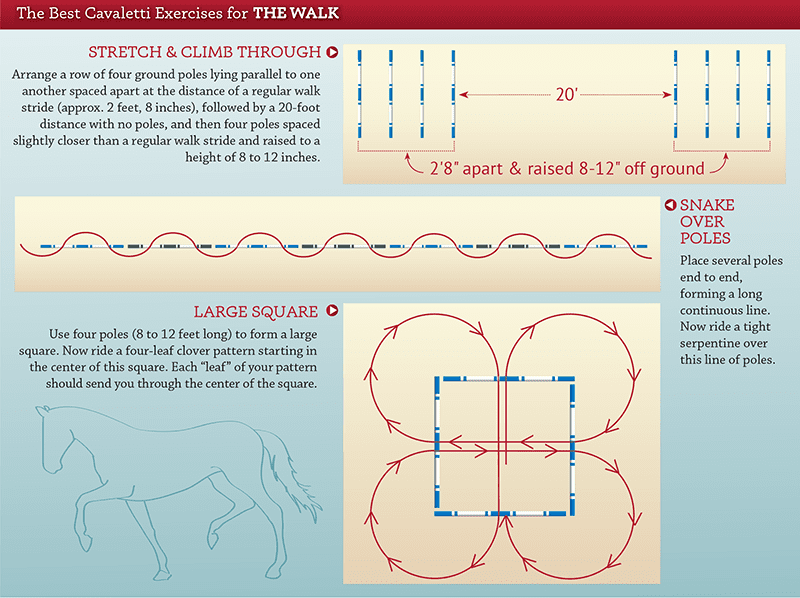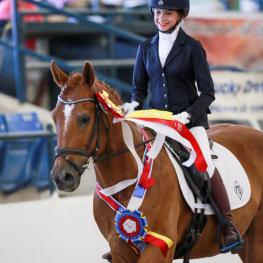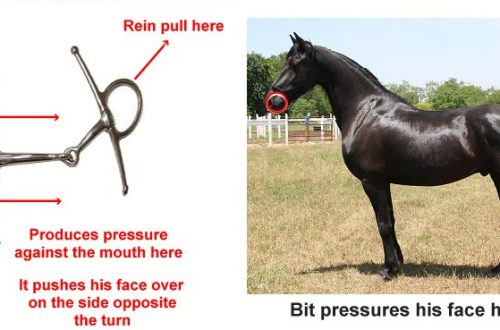
Working on the quality of the gaits: the best exercises on the cavaletti
Working on the quality of the gaits: the best exercises on cavaletti
In dressage competitions, each gait of the horse has special requirements. But not every horse is naturally endowed with outstanding movements. In an effort to improve the quality of a particular gait, riders often forget that the horse needs to be developed comprehensively, not focusing only on problems that require special attention.
In this article, we will talk about each of the three gaits and offer you Cavaletti exercises that can not only help you in your work, but also diversify your training.
Many riders spend the lion’s share of their time working on one gait at the same pace. As a rule, this gait is the trot. Although such actions by the rider in most cases significantly improve the physical condition of the horse, they do not contribute to the development of flexibility and engagement of postural muscles. At the same time, work at the walk and canter relaxes the horse, increases the level of mobility of the joints of its hind limbs and develops postural muscles.
A horse with quality movements needs harmoniously developed muscles. Tightness or weakness in one segment affects the functioning of the entire muscular system. It is especially important for us that the muscles of the upper line (back) and lower line (abdomen) work in harmony and are sufficiently formed. The underdevelopment or hypertrophy of one of the systems destroys the harmony of the horse’s movements.
Systematic work on each of the gaits leads to a balanced development of the horse’s body. Invaluable help in it will be exercises with Cavaletti. Yes, you will often have to spend time forming a “route”, but the result will exceed your expectations.
Step
Work on the walk helps to eliminate the asymmetry of the horse, its stiffness and stiffness. It is at the walk and precisely at the cavaletti that you can influence the nervous system of the horse, allow it to adapt to new movements without using the large muscles that we need in gaits with bоmore impulse.
At the walk, riders can restore the transmission of sensory and motor nerve signals to the horse, increase the range of motion of its joints, and also loosen tight parts of the body. If the postural (responsible for maintaining posture) muscles of the horse conduct nerve impulses correctly, work on the rest of the gaits becomes more effective.
For example, if the horse has a hurried and/or short trot, you can spend more time working on the walk patterns. This work involves more active flexion of the knees and hocks, respectively, the quadriceps and flexors will be more involved in the work, which in turn will positively affect the balance between the muscles of the topline and abdominal muscles. As a result, the horse will be able to take more sweeping and free steps.
Many riders feel that walking is a waste of time. What a delusion! The step creates relaxation and, accordingly, movement. Without relaxation, there can be no further effective work!
Whenever you notice a problem with your horse’s posture (he’s sideways, won’t bend to one side or the other, etc.) or find that the horse is pinching in one place or another, spend more time and work on the walk.
We will offer you the three best, in our opinion, exercises that can be performed for this purpose on Cavaletti:
Stretching the muscles
Lay four poles parallel to each other on the ground (the distance between them should be the length of the standard step of the horse – about 0,85 m). At a distance of six meters – four more poles (the distance between them will need to be slightly narrowed, and the poles themselves will need to be raised to a height of 20-30 cm).
Snake on poles
Arrange the poles in a line (end to end) and go through them with a serpentine snake. When performing the exercise, be careful – do not cut, do not increase the “loops”.
big square
Take four 3,65-2,4 m long poles. Lay them out in a square shape. Pass the “four leaf”, each time passing through the center of the square.
Lynx
The trot is the best gait for strengthening the cardiovascular system and muscle tone of the horse. When trotting, the back serves as a balancing rod that supports the diagonal movement of the limbs. Of course, the back must be strong.
There is one unpleasant moment – a too strong back is often enslaved. When the horse fails to properly relax, fails to engage the muscles that support posture, the long back muscles begin to perform a dual function – they move the horse forward and maintain its posture. But the muscles cannot play a dual role and take on the role of postural – as a result, they tense up and become enslaved.
When a horse already has well-established posture problems (asymmetry, curvature), too frequent and long trotting only exacerbates them. In this case, it is better to do small repetitions at the trot to strengthen the cardiovascular system and devote more time to working at the walk. First, you will correct the posture of the horse, and then you will begin to work on the development and strengthening of the “motor” muscles.
Cavaletti will help the horse to regulate the width, height and rhythm of steps – they involve not only motor, but also postural muscles.
The following trot drills are useful for horses of all skill levels.
The arches encourage the use of the oblique muscles of the horse’s body, which stabilize the horse and allow him to move rhythmically and expressively.
Left back, right back
At the end of the arena between the letters M and C, fan out four poles. The distance from the middle to the middle of each pole is 1,2 m. Also place the poles at the other end of the arena – between A and F.
Start from B. Go to the upper corner, drive over the poles and go back to the left. Return to B and move to the opposite corner. Pass the poles there and move back to the right. Repeat the exercise several times.
A row of poles with a “space”
Place four poles 1,2-1,4 m apart (depending on your horse’s stride at the trot). Then add another pole to the row at a distance of 3,65 m. Move at a calm trot along the poles, and when passing the “gap” – try to maintain the same rhythm. Repeat the exercise 10-15 times.
Eight on poles
Place two 2,4 m long poles at a 90 degree angle to each other and raise them 30 cm off the ground. Work on the eight on the poles.
Gallop
Learn to love the gallop! I use this “mantra” all the time during my seminars. Many riders whose horses are “carried” or “christened” prefer not to affect the canter. They methodically work on other gaits, hoping that the canter will correct itself. But this is a delusion! Both the walk and the trot improve, but the canter remains undeveloped.
The gallop cannot be underestimated. Even if the horse does not have a perfect canter, the impact of working on it on the horse’s body is enormous! The gallop improves the symmetry of the horse’s body and its musculature in a way that neither the trot nor the walk can improve. It creates remarkable flexibility in the lumbosacral region of the horse. Yet it is this area that is prone to tension, which affects the horse’s ability to round the topline. If the lumbosacral region is elastic and relaxed, then the energy from the hind legs circulates freely through the horse’s body through the back, neck, nape, etc. The back is brought up.
Unfortunately, the walk and trot use this department minimally. At a canter, both hind legs move forward together, thereby swinging the pelvis. At the same time, the front limbs push up in front of the horse to create a suspension moment. This in turn releases the muscles between the shoulder blades. Medical tests that have been carried out on galloping horses have shown that the gallop has a good effect on the development of the long back muscles. The canter is a vital tool, especially for horses with asymmetrical development or problems in the topline due to tightness.
Cantering helps to activate the horse, remove the “block” in the back, which prevents him from being put on the reins. It is possible to train a horse and make his muscles strong without cantering, but that strength will lack the agility and looseness that you can only get by canter training.
To work at a gallop, we are also ready to offer you several exercises.
The general rule is to set the poles at a height of 30 to 45 cm. This will force the horse to take the exercise seriously and focus on the work.
Base row
Place two poles 3-3,3 m apart in the center of the arena. Work the poles at a calm working canter. Try to keep soft contact with the horse’s mouth. Watch for balance and rhythm.
Two places in a circle
On a 20-meter circle, place two poles – one opposite the other. Move in a circle at a working canter, try to cross each pole strictly in the center. Sit deep in the saddle, follow the rhythm and pace. The horse should bend around your inside leg without falling out of the “circle”.
Poles placed randomly
Arrange several poles in random order. At a working calm gallop, perform any conceived figures – races, serpentines, volts, changes of direction, etc. Plan your circuit in advance and stick to the route.
Watch the horse’s balance and canter rhythm. A well-balanced horse needs training that takes into account all its characteristics. You need to dose the work on each of the gaits, depending on what you are working on, what you are correcting, what result you plan to achieve. In general terms, the trot gives strength, while the walk and canter make the horse supple and free. You must determine for yourself what your partner needs. What muscles – postural or “motor” – need to be developed.
Zhek A. Ballu (source); translation by Valeria Smirnova





